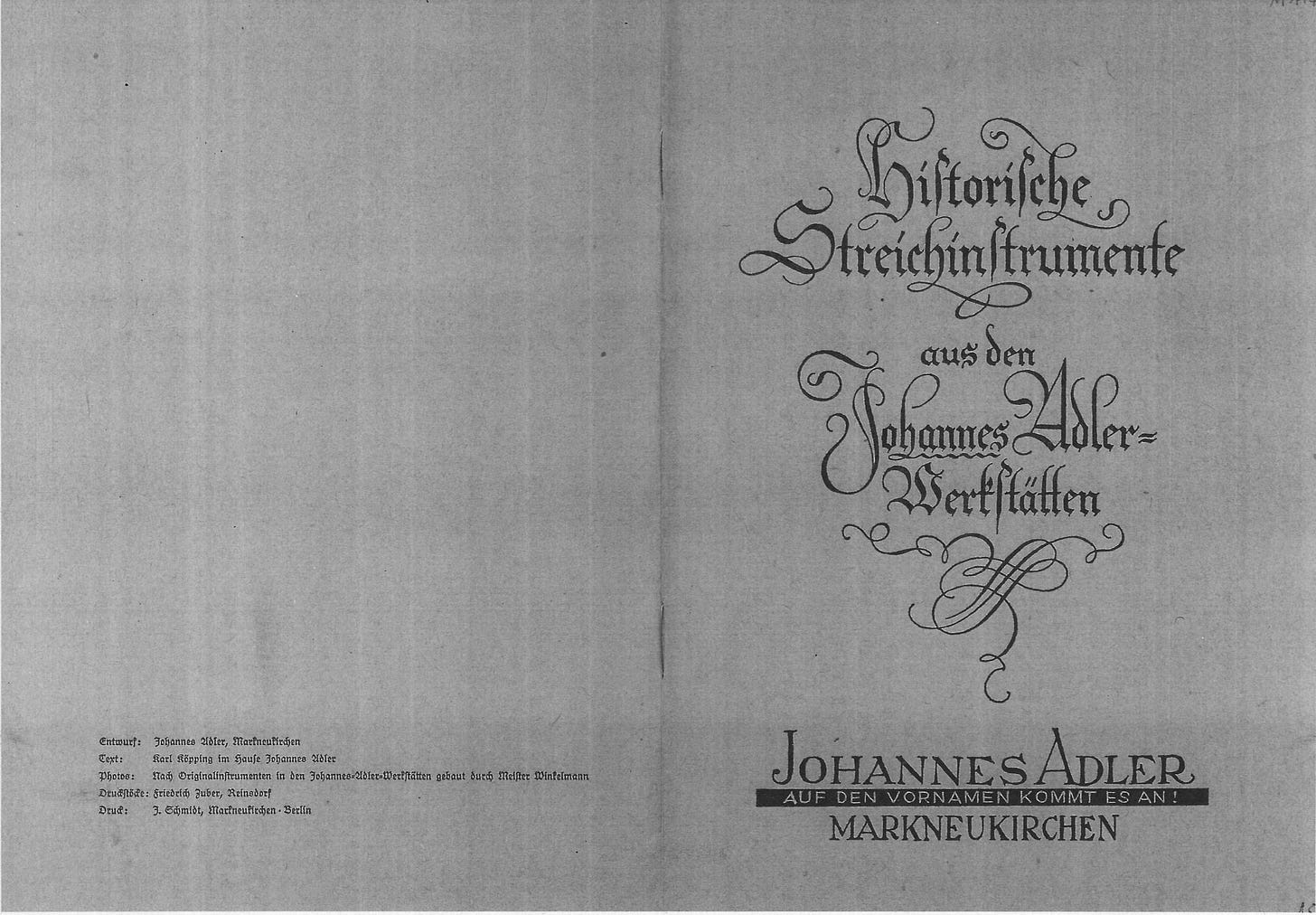Before going to Markneukirchen last February, we thought that instruments like the piccolo Hoffmann survived during the 19th and 20th centuries in a less official stream of music, like folk music or Haus Musik. This could explain the several instruments in museums and the octave-geige.
Call it a coincidence if you like, but on that trip I brought with me the book “Frau Musika - J. S. Bach” by Alberto Basso, a detailed biography of J. S. Bach and an analysis of the revival of his music. This book helped us to see the role of those instruments in the culture of their time, explaining why so many were produced and survived despite not being mentioned in the official history of music and music culture.
It’s as simple as that: they were viola pomposas, the instrument “invented by Bach” for Lutheran music. This means that at every anniversary of Luther, every 50 years, there happened a rise of interest in Lutheran music and Bach’s music, and those instruments were re-proposed. So not experiments for music trade shows, not small basses to enjoy chamber music or haus music, but an organic offer of early music instruments.
This idea was confirmed during our visit to Markneukirchen when we saw a viola pomposa by Johannes Robert Adler. The father of J. R. Adler founded a firm of woodwind instruments, and the firm went on for three generations making mainly recorders.

J. R. Adler opened a string instruments production for a couple of decades in the late 30s and 40s. The catalogue presented here belongs to this period. It is a catalogue of early music instruments that perfectly appeals to the Renaissance of early music thriving in that period.
From the introduction to this catalogue:
In recent years of development of youth, folk and domestic music, it has become a fact that the novice instrumentalist - regardless of age and talent - with one of the revived old instruments (recorder, viola, etc.) and literature associated with it can lead relatively faster to a satisfying as well as meaningful music production. Compared to the study of a modern orchestral instrument, the technical requirements are low. Even the exercise material from the times between the 15th and 18th centuries is simpler as well as musically sound and taste-forming. The path leading from the music of these eras to the present inevitably follows.


Updates from our workshop
Daniela’s new Violoncello da Spalla settled in white is played in the title video above. We’re happy with its result and are moving forward with varnishing both instruments!











Share this post